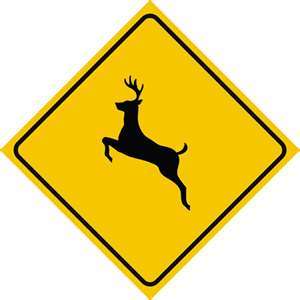Beyond Ice and Snow: Cold Weather Driving Hazards to Avoid
 |
Rear-ending accidents, wildlife collisions and parking lot hazards spike in the fourth quarter, according to Farmers Insurance
LOS ANGELES -- Oct. 6, 2015: While icy and snow-packed roads get the most attention as temperatures drop, drivers should also be on the lookout for less conventional but equally dangerous hazards, according to the latest Farmers Insurance Seasonal Smarts Digest.
Leveraging claims data from 2013 and 2014, the report reveals that October, November and December are also common months for rear-ending accidents, wildlife collisions and parking lot hazards. Roughly one-third of annual rear-ending claims are filed in the fourth quarter, and 4 in 10 of the year's wildlife collision claims occur during this time period.
"The hazards posed by cold-weather driving are significant, but there are many other dangers this season that drivers might not be aware of," said Paul Quinn, head of claims customer experience with Farmers. "Knowing about potential accident causes is the first, best step toward prevention."
Tips for Avoiding Unhappy Holidays
Drivers can take proactive measures to avoid accidents or reduce the level of damage should one occur. Quinn suggests drivers keep the following tips in mind during the fall and early winter months to keep their cars and themselves out of harm's way:
Preventing Wildlife Collisions
At night, use your high beams when possible to increase visibility and spot animals more easily.
Always drive with your seatbelt on. Hitting a large object, like a deer or moose, can be just as dangerous as hitting another vehicle.
Pay attention, even when driving in the city. Deer and other animals, including dogs, squirrels and raccoons, are found in suburban and urban areas, especially as food grows scarce in the winter months.
Avoiding Parking Lot Hazards
Park near a curb to limit your car's exposure to other vehicles.
Avoid tight parking spaces. According to the National Safety Council, 1 in 4 vehicle accidents can be blamed on poor backing techniques.
Always use designated traffic lanes when driving through a parking lot and avoid cutting through empty spaces.
Reducing Rear-Ending Accidents
Put down your phone while driving, adjust the radio only at stoplights, and set your GPS before you hit the road. A full 87 percent of rear-end collisions happen simply because the driver isn't paying attention, according to the National Transportation Safety Board (NTSB).
Slow down. Find alternate transportation or avoid getting behind the wheel when you're tired or driving conditions are less than ideal. Fatigue, road conditions and reduced visibility are common causes of rear-end collisions, according to the NTSB.
Use your signals. According to the NTSB, if passenger car drivers have half a second of additional warning time, roughly 60 percent of rear-end crashes can be prevented.
Drivers should also take the time this season to review their coverage levels with their insurance agent, Quinn said.
"When it comes to insurance, a collision with a deer is not treated like a collision with another vehicle," Quinn said. "It's important for drivers to sit down with an agent and determine whether their coverage protects them from all hazards, not just the ones that get the most attention."


